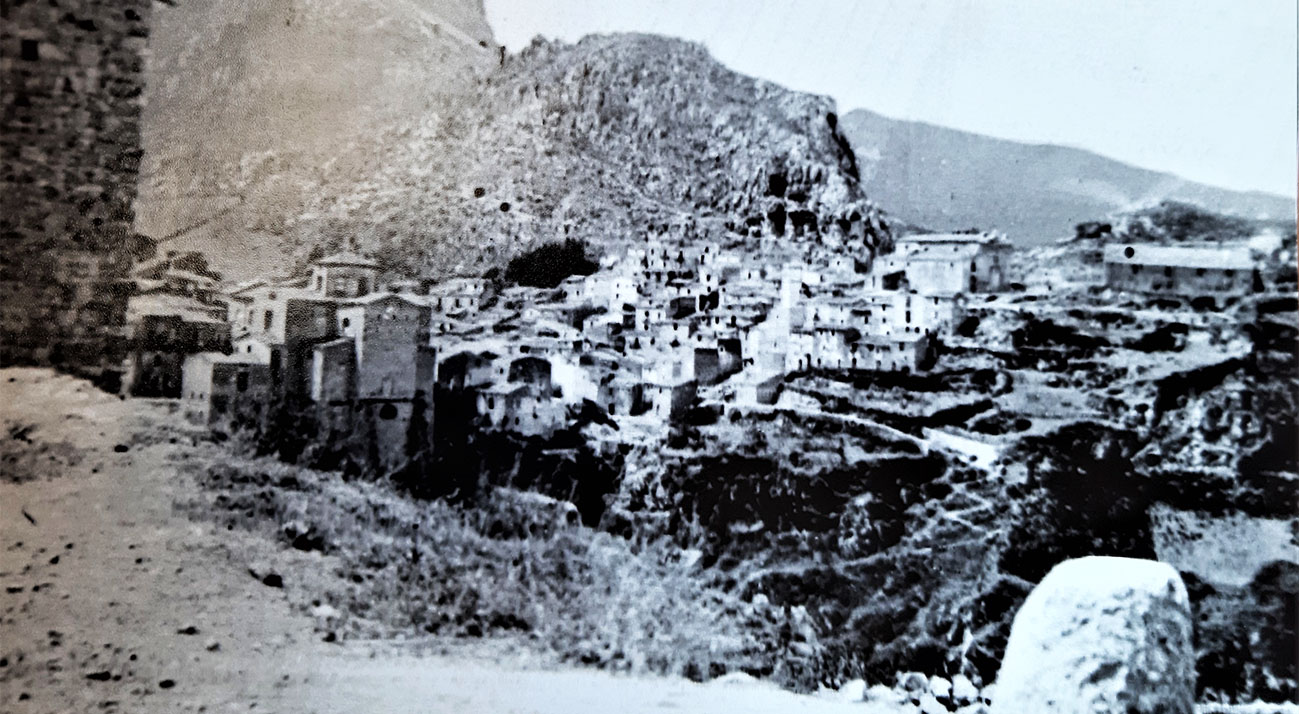Your basket is currently empty!
The neighborhood of “di la Terra Vecchia” in the area of the castle and the Ruga di Nostra Donna
The castle of Gratteri must have been a real Madonite stronghold that rose in an eagle’s nest on the top of a sheer cliff, 634 meters above sea level, difficult to conquer and take by storm. The first mention of it is given by Idrisi in 1150 who speaks of the castle of “Qratiris, small but dominating a fertile territory” (Amari 1982, I, p.115).
It is therefore assumed that the castle was built and fortified by the Normans around the 11th-12th century on a military garrison from the Arab era, probably preceded by a Byzantine one. This construction was undoubtedly a fortress with natural defenses that the work of man had strengthened, such as to withstand any enemy assault, whether it came from the neighboring Val di Mazara or from the sea, which was only a few miles away.
Its strategic position was remarkable: it was in fact the first fortified outpost of Val Demone, built on a ruinous peak that descended over an abysmal precipice above the localities of Difesa and Mancipa. On two sides it was bordered by a deep ravine called “Bocca dell’Inferno”, moreover, mighty walls had been built to make it impregnable.
The Passafiume, a historian who lived around the mid 1600s, writes: “… the town is distinguished by new and old houses. In the old part there is an ancient castle, located in an impregnable place, built with art and surrounded by solid walls. It is accessed through three doors, one of which is dedicated to Lorenzo Ventimiglia … “.
The main gate, (of which the ruins are still evident), that is the one dedicated to Ventimiglia, was located in the lower area, on the bank of the stream that crosses the town, near the current Vicolo Manzoni, a street that until 1935 was called Vicolo Saraceni.
The second gate stood where the current Via Castello begins, at the corner with Vicolo Albanese, at the foot of the bastion of the clock tower, on whose top the guard stood. The third door is still visible and well preserved, for it you enter the castle area from the current Piazzetta Garibaldi, passing under the floor of the Old Madrice. Above this gate the arches of the ancient buildings are still intact, equipped with slits and barbicans.
Within the perimeter of the castle there were two churches: Santa Maria del Rosario in Castro and San Giuseppe, now disappeared, but of which fragments of walls and floors remain. Although ruined by the wear and tear of time, until the beginning of the last century the castle was almost intact: several rooms and the prison were clearly visible, famous because the arrogant Antonio Ventimiglia in 1383 made the Bishop of Cefalù starve there , Nicolò De Burrellis.
In 1820 the progressive demolition of the castle began under the pretext of the need to take the material needed for the construction of the current Chiesa Madre, then towards 1850, an inexperienced priest ordered its complete destruction, leaving only the towers and the highest peaks. Unfortunately, the latter, isolated, without chaining, fell apart, helped by the numerous lightning strikes that even today prefer to “visit” that area.
After the war, a tank was built on the site of the destroyed castle for the town’s water supply. Only modest traces of walls remain of the ancient complex “(See Castles of Italy – Di Francesca P. 2000).
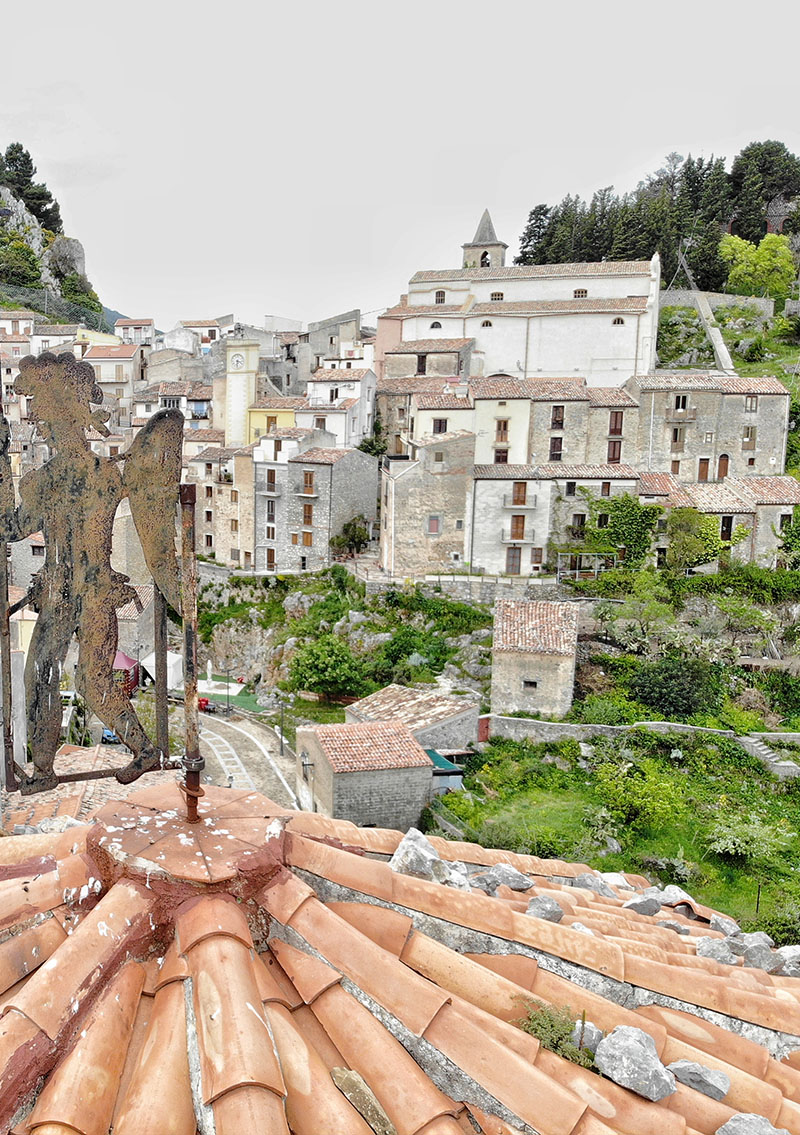
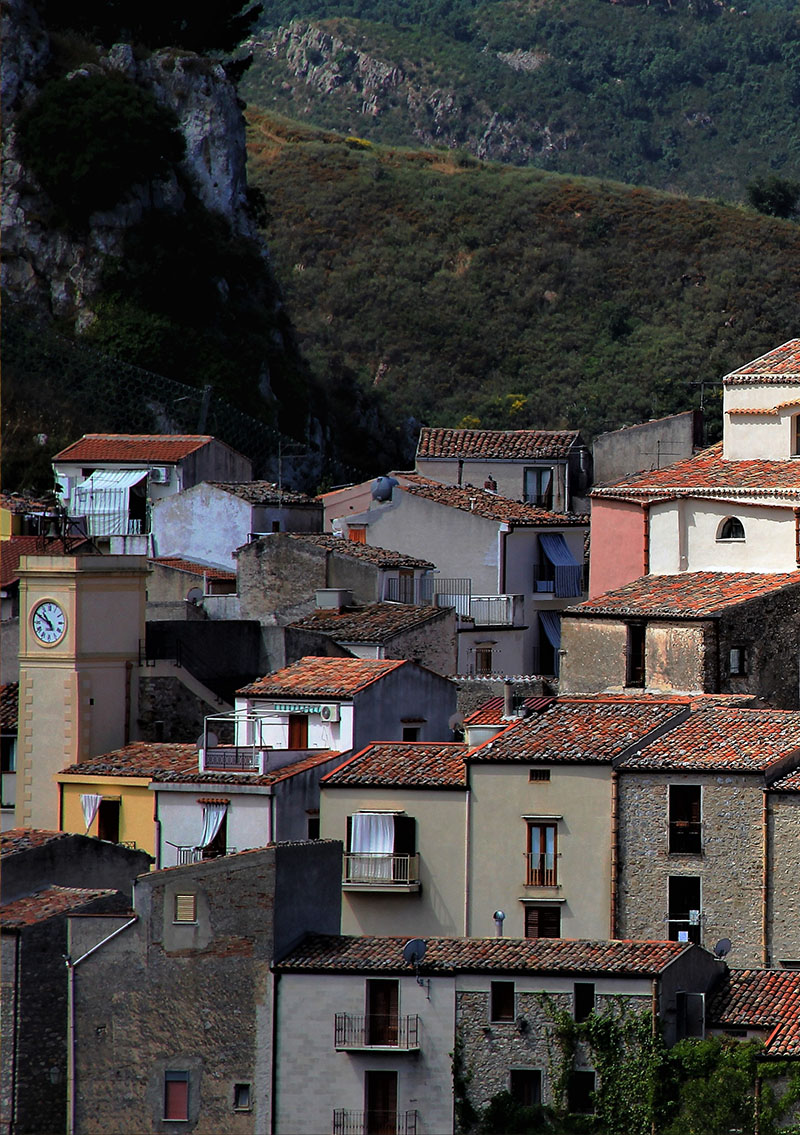
Unfortunately, today we know very little about what the ancient castle was like, however the revels of the inhabitants of Gratteri from 1500 can come to our aid, giving us information that could be significant:
Lucha di brucato relitta di Antonino di brucato rivela una casa terrana in questa terra nella q.ta di sotto lo castello confinanti con la casa di Catarina brucato et la casa di Francisco Fatta di prezzo di unzi tri (Archivio di Stato-Palermo, Riveli Tribunale Real Patrimonio, V. 1170, f. 317, anno 1616)
Thanks to them we know that the district that gravitated close to the castle was called “di la Terra Vecchia”, which today would be located in the area gravitating around the Matrice Vecchia dedicated to St. Michael the Archangel. This residential neighborhood would also have given rise to the Gratterese surname Terregino, inhabitant of the Terra Vecchia:
Catrini Chirincione relitta di Cola Chirincioni rivela una casetta terrana interno la terra vecchia a la q.ta di Santo Michelj confinanti con la casa di Juseppj di alcurj et con la casa di Mario Incrapera di prezzo di unzi cinco (Archivio di Stato-Palermo, Riveli Tribunale Real Patrimonio, V. 1170, f. 207, anno 1616)
Giorgi di Gesaro capo di casa di anni 40, rivela una casa a lo quarteri di la terra vecchia confinanti con Margarita Paguna et con Gelica Marchisa di prezzo di unci quindici (Archivio di Stato-Palermo, Riveli Tribunale Real Patrimonio, V. 1166, anno 1584);
Mastro Vrieli di Rustici rivela una quarta parti di un molinello alla q.ta di la terra vecchia per prezzo di unci tridici (Archivio di Stato-Palermo, Riveli Tribunale Real Patrimonio, V. 1169, f. 548, anno 1607)
Gioi Maria Caro rivela dui casi terrani in questa terra nella terra vecchia confinanti con la casa di Gioi Maria Sansuni et con la casa di Gioseppi racino di prezzo di unci diciotto (Archivio di Stato-Palermo, Riveli Tribunale Real Patrimonio, V. 1170, f. 449, anno 1616)
From the Revelations of the State Archives of Palermo it is also clear that it extended up to the Molinello in the area that was called, starting from the century XVIII, la Conigliera, since it is a stony ground where rabbits and wild hares nested.
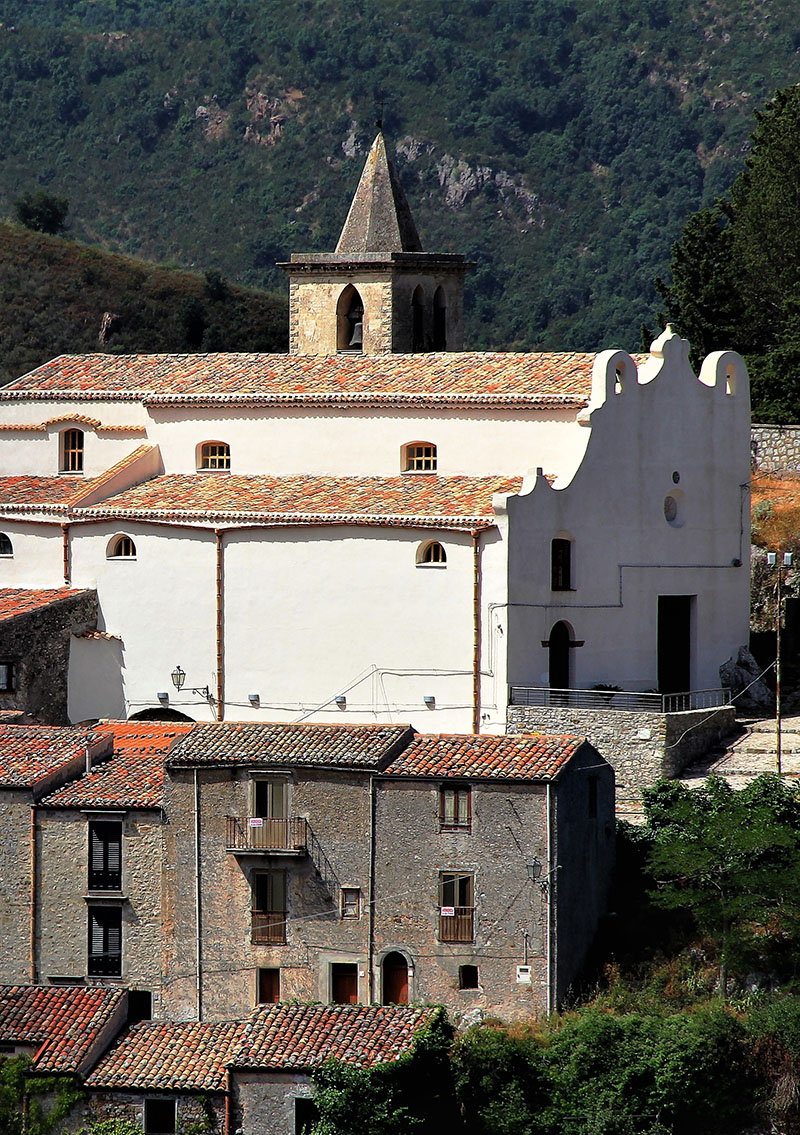
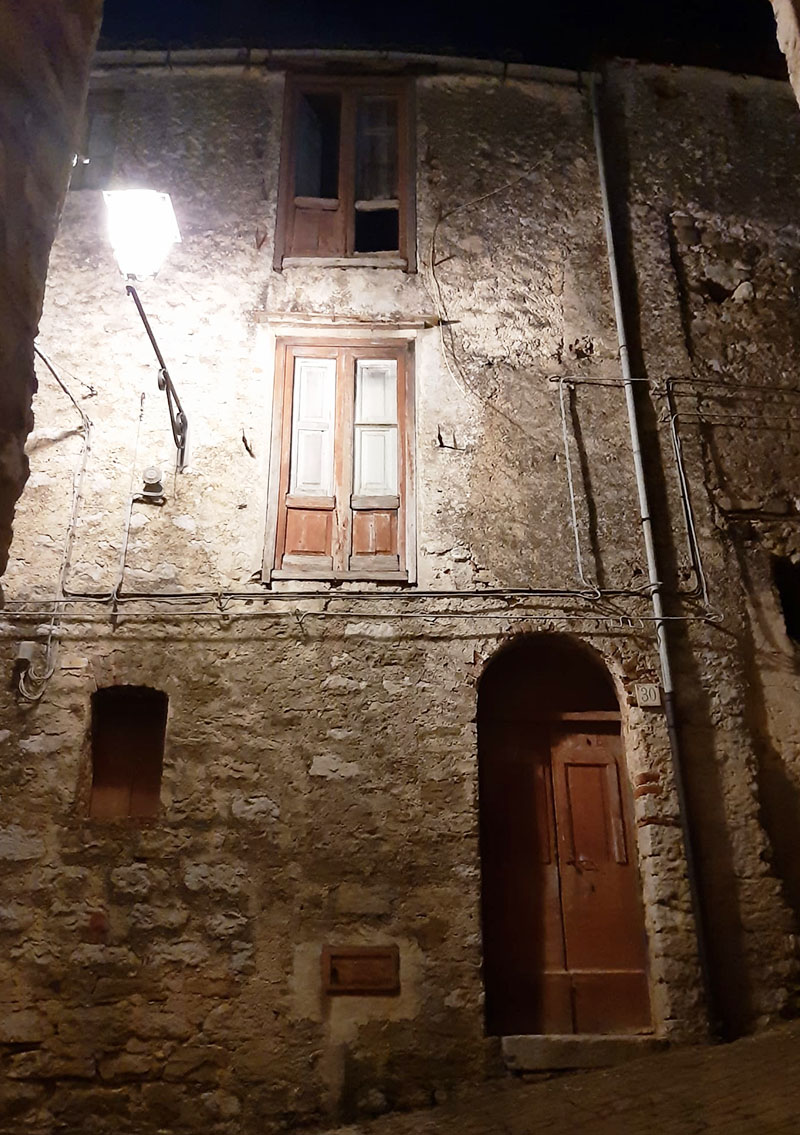
“Mauro Jacuzzo Procuratore della Venerabile Compagnia del SS.mo Rosario rivela una chiusa di terre scapole q.ta della Conigliera in questa terra sotto di detta Venerabile Compagnia” (Archivio di Stato-Palermo, Deputazione del Regno, Riveli 2945, anno 1748).
The church of Santa Maria in Castro, consecrated in the century, was located in the area belonging to the castle since the Norman period. XII and in the sec. XVI was called the church of the Rosary. It was an ecclesiastical benefit. It fell into disrepair in the first decades of the century. XIX (Di Francesca 2000, p. 27). This church was located above the place called Conigliera below the warehouses of the Barons of Gratteri. The floor and some ruins of the perimeter wall are still visible.
It was dedicated to Maria SS. del Rosario and the homonymous Confraternity was located there. It was suppressed in 1818 (Scelsi 1981 pp. 76-77). Today only the marble image of the Madonna and child from the Gagini workshop remains, placed inside the Vecchia Matrice.
However, thanks to the consultation of the Revels we also know that the road that connected the church of the Rosary to the clearing in front of the Old Matrice was called the “Ruga di Nostra Donna” (from the lat. Nostra Domina) literally ‘the road of Our Lady‘, in reference to the Mother of Jesus, also called with the nickname of Our Lady of Monserrato.
In Gratteri, the cult for Maria SS. of Monserrato is testified by the presence of an altarpiece (no longer existing today) inside the Old Matrix cited in the will of Onofrio Bellomo Dean who prepares for the Royal Clergy of Gratteri to celebrate on the infra octava Sunday, the Birth of Nostra Donna a mass sung in the altar of Monserrato inside the Mother Church (suppressed religious corporations of Cefalù – Clero di Gratteri, V. 105, f. 329, year 1730).
Cosimo Fatta capo di casa di anni 50, Francina sua mogliere, rivela una casa existenti in questa terra nela strata di nostra donna confinanti con la ditta ecclesia et con la strata publica di prezzo di unci deci (Archivio di Stato-Palermo, Riveli Tribunale Real Patrimonio, V. 1166, anno 1584);
Giacobu di Gerardo capo di casa di anni 50, Portia sua soru, rivela una casa existenti nella strata di Nostra donna confinanti con la casa di Georgi di Gesaro et via publica (Archivio di Stato-Palermo, Riveli Tribunale Real Patrimonio, V. 1166, anno 1584)
Angila Xiandro relitta di gianni Xiandro rivela una casa terrana in questa terra nella q.ta di Nostra donna dentro la terra confinanti con la casa di Maria Incrapera et con la ecclesia di lo rosario di prezzo di unzi setti (Archivio di Stato-Palermo, Riveli Tribunale Real Patrimonio, V. 1170, f. 441, anno 1616)
In the second half of the century. XIII in the area of the castle, the church of San Giuseppe was also built. An oratory called “del vento” was attached to it. It fell into disrepair in the early 19th century (Di Francesca, 2000).
It was built in “an unworthy and indecent alpine place and outside the town where the Saracens had as a point of defense” even before the church of San Michele Arcangelo was built, which took place in the mid-fourteenth century. Today the golden wooden simulacrum of St. Joseph present in a side chapel of the Matrice Vecchia comes from this church.
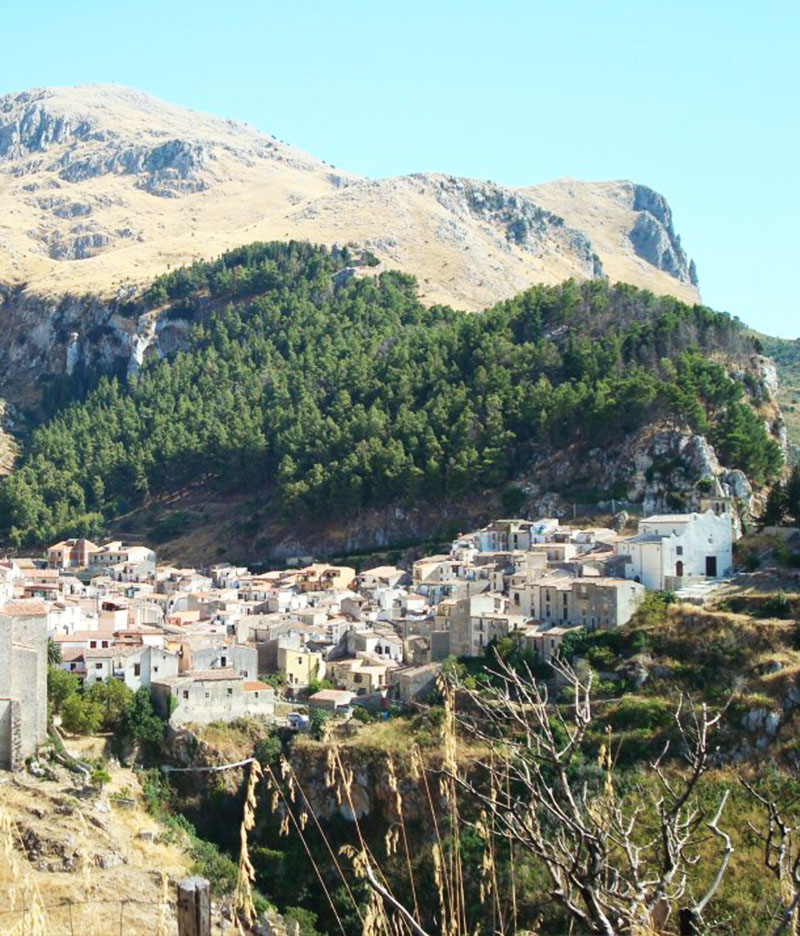
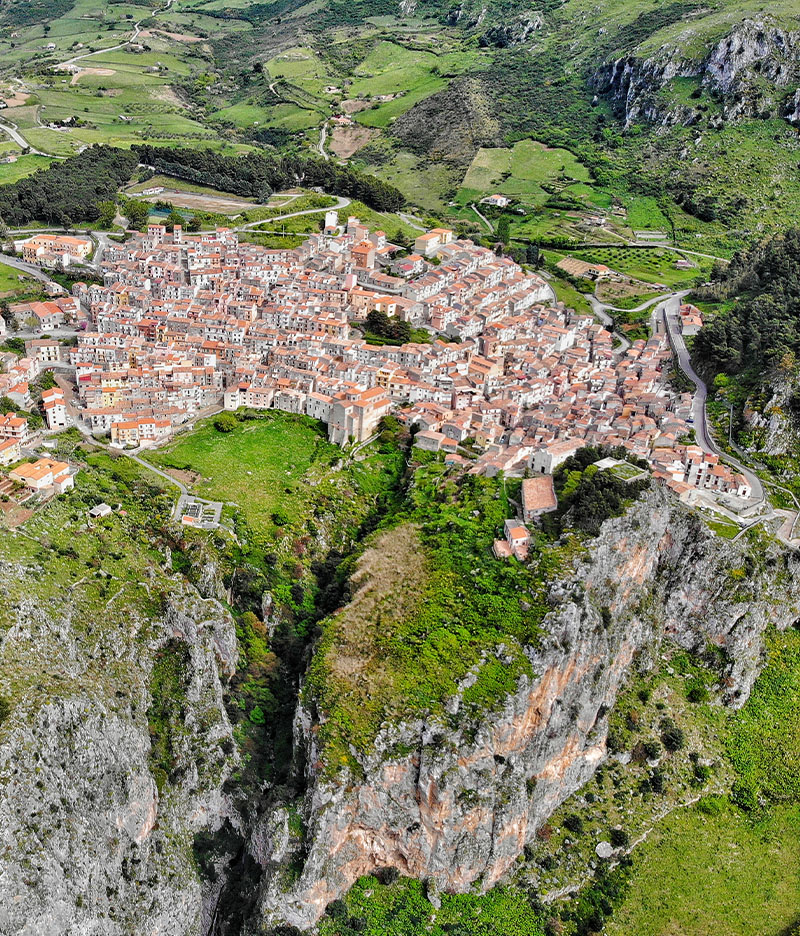
Marco Fragale
(Università di Palermo)
Bibliografia:
AMARI MICHELE, Storia dei Musulmani in Sicilia, F. Le Monnier, Firenze, 1858
DI FRANCESCA PINA, Gratteri, Palermo, Flaccovio, 2000.
EDRISI, Op. cit., in AMARI MICHELE, Biblioteca arabo sicula, vol. I, Ermanno Loescher ed., Torino e Roma, 1880
GREGORIO ROSARIO, Historiam Siculam, Palermo, Regia Tipografia, 1780).
PASSAFIUME BENEDETTO, De origine ecclesiae cephaleditanae, Venetiis 1645.
SCELSI ISIDORO, Gratteri,
TERREGINO GIUSEPPE, Il Barone usurpatore e il Vescovo santo, in www.gratteri.org, 2018
Il castello di Gratteri in Castelli e Torri d’Italia www.icastelli.it



